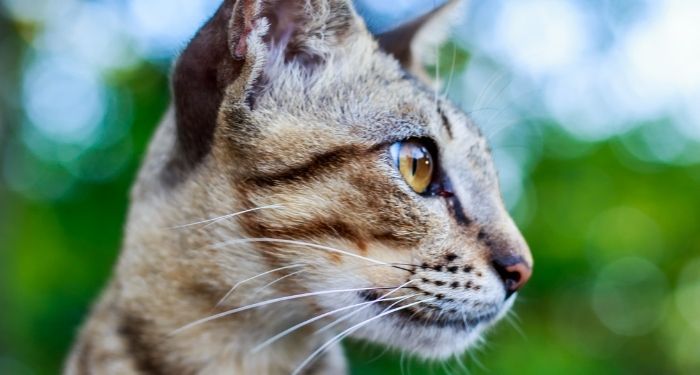
How Does The Love For Pets Feature In Asian Fiction?
While growing up, I was never allowed to have my own pet. Most of my family members were allergic (or pretended to be so). I had to satisfy myself by petting dogs of friends, cats of strangers, and the like. And when finding a pet to pet became as hard as getting out of beds on gloomy days, I resorted to fiction. There I met animals whose many hijinks kept me dreaming of having my own pet someday.
The pets we bump into in Asian literature are never ordinary, much like their non-literary renditions. They come in many shapes and sizes, bringing unconditional love into the lives of our protagonists and changing their lives for the better. Sometimes they invite laughter riots and sometimes they are sincere caregivers. Whichever form they choose, they always fill the lives of their human friends with hope.
The readers meet Jiji, a wise black cat and also Kiki’s familiar, in Kiki’s Delivery Service. Originally written by Eiko Kadono and translated by Emily Balistrieri, as most of us already know this book is later adapted into a movie by Hayao Miyazaki. Be it forging new friendships or building inner strength, Jiji always has Kiki’s back. Jiji’s counsel bolsters Kiki’s resolve to be the witch she was always meant to be and it takes her many (mis)adventures to find out that magic can be found in the most ordinary of places. Jiji adds to the pace and pulse of Kiki’s life. Sometimes humans curate their lives with broad aspirations and enormous self-regard. But then pets like Jiji step into our lives, reminding us to stay grounded.
Set in the 1980s, Takashi Hiraide’s The Guest Cat, translated by Eric Selland, captures the ephemerality of love and life through a Tokyo couple’s attachment to their neighbor’s cat. The couple is in their 30s, work as freelance copy editors, and have very little to say to one another. One day, a neighbor’s cat named Chibi, appears in the couple’s garden and, though she is not theirs, their lives eventually become centered around her visits. The cat comes as and when she pleases, thus becoming a necessary part of their lives, adding anticipation and joy to their lives. Eventually, the couple abandons their humdrum routines in favor of Chibi’s many antics, like how she climbs trees at lightning speed, swats flies, etc. They fall in love with the wild and carefree Chibi, in turn falling in love with love again. Death is not always physical and it felt like the couple has entered a state of non-physical death before Chibi comes into their lives. Theirs used to be a life survived, and not lived. Chibi instills in them the desire to not die before they can live.
The Cat Who Saved Books by Sōsuke Natsukawa, translated by Louise Heal Kawai, is about Rintaro and a magical cat named Tiger. Rintaro is an orphaned high school student still processing the death of his grandfather. His late grandfather’s second-hand bookstore is the only place where he finds comfort but now he has to leave that too and move in with an aunt. But over the course of the ten days before this big move, Rintaro will prove to himself that he is much stronger than he thought. Tiger the tabby wants to save books, which will lead to Rintaro saving himself. These two set out on a series of bizarre adventures. Rintaro must free neglected books kept imprisoned in locked cabinets, convince an important person to stop summarizing books, and coax another important person into finally understanding that maximizing sales should never be the World’s Best Books’ only goal. Through the unconventional kinship between a boy and a cat, larger themes of how contemporary reading habits are manipulated by the publishing industry have been impeccably portrayed. The world often seems to scrub us of our identities. In Rintaro’s case, the bookstore is an extension of his being. Tiger becomes the recipe for renewal in Rintaro’s life. The warmth he brings lassoes Rintaro back to reality and pushes him to put his life in order. Tiger is the steam that propels Rintaro to reinvent himself with every challenge he faces.
Vaseem Khan’s The Unexpected Inheritance Of Inspector Chopra introduces us to an elephant that will prove to be indispensable to Inspector Ashwin Chopra’s life trajectory. When he retires, he inherits two unexpected mysteries. The first is the case of a drowned boy whose suspicious death has remained an unsolved mystery. The second is a baby elephant. His uncle gifts him this baby elephant with whom he will eventually strike up a very unusual and funny friendship. The elephant has brilliant investigative instincts and adds to the appeal of the book by introducing some much-needed comic moments. The love these two share is one for the ages. We are once again reminded of no matter how unusual our pets are, we will always find solace and solidarity in their company.
The pets we meet in Asian fiction accept the great task of carrying our lives forward. They are not just subjects of adoration, but also an equal participant in the lives of their human friends. They nudge us to believe that our lives are never just a collection of moments where we lost control. Every time one of our protagonists’ stories refuses to converge with hope, a pet appears on the scene to turn their life around. The pets of Asian literature are not associated with any kind of antipathy and foreboding: a refreshing change from the current state of affairs. They fold themselves into the lives of our protagonists, seamlessly. For the times when the days feel like a string of sounds that fail to coalesce into melody, literary pets, much like their non-fictional counterparts, save the day.
For more books on love for pets, please check out these nine fiction books about pets!











